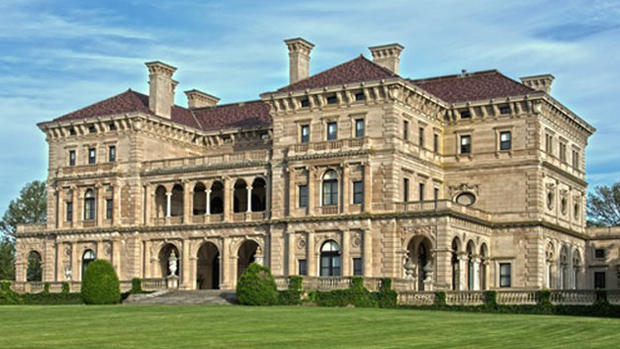New Tour Of The Breakers Takes Newport Mansion Visitors Underground
NEWPORT, R.I. (AP) — Visitors to the spectacular Gilded Age mansion The Breakers now have the chance to explore its depths with a new tour that shows off the domestic technology that helped make the 70-room building state of the art when it was completed in 1895.
The hour long "Beneath The Breakers" tour takes place almost entirely underground, from the boiler room built hundreds of yards from the house, through a tunnel as wide as a carriage, and into the mansion's basement, where visitors can see original parts of its elevator, electrical system and plumbing — which used three kinds of water.
It's a weekend handyman's dream tour and a completely different way to look at the opulent house built by railroad magnate Cornelius Vanderbilt II. The Preservation Society of Newport County, which owns The Breakers and several other mansions in Newport, developed the tour based on journals kept by a resident house engineer, as well as other documents.
Tour guide Raymond Roy describes the tour as focusing on "the guts and the glory" of the house, as opposed to the "glitz and glamor" upstairs.
"The systems we talk about are commonplace today," Roy said.
But at the time The Breakers and other famous Newport mansions were built, amenities such as electricity were available to only a few.
The tour begins in the caretaker's cottage, which sits at the gate to the 13-acre estate and was built to camouflage a massive chimney that runs from the boiler room, dug below it by hand.
The boiler was intentionally placed far from the main house. The first Breakers mansion was made of wood and burned down in 1892 in a boiler explosion.
The architect, Richard Morris Hunt, designed an innovative indirect hot water system powered by coal to heat the 138,000-square-foot house. Two boilers now on display in the room heated a school until 2016 but are the same as what was originally installed here, Roy said.
Hot and cold water — both fresh and saltwater — was available from the taps in the bathrooms. City water was used for flushing toilets, because of its unpleasant taste.
Rainwater collected in cisterns and run through a cheesecloth filter was used for drinking, Roy said. The house, built on a cliff over the Atlantic Ocean, drew saltwater from the ocean for baths, which was thought to be therapeutic.
A power station built by Thomas Edison supplied electricity, and visitors can still see the electrical panel where it came into the house. Its switches are made of copper, and they are mounted on marble, which does not conduct heat. While the panel was retired from use in the 1990s, there is still some live knob-and-tube wiring used in the mansion, Roy said.
Visitors can also get a glimpse of airshafts that run through the house, the old wine cellar and other curiosities that weren't public until the tour began in January.
Gary and Cindy Denholm, of Frederick, Maryland, toured the upstairs of The Breakers a few years ago, but this tour was a new way to see it. Gary, who works at the National Archives, is interested in the history and politics that serve as a backdrop to the homes, while Cindy enjoys learning about the architecture and people who lived there.
"We each take something different away," she said.
(© Copyright 2017 The Associated Press. All Rights Reserved. This material may not be published, broadcast, rewritten or redistributed.)




